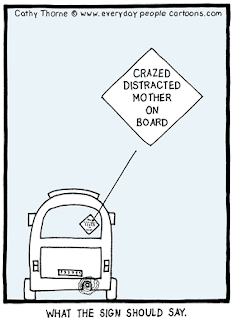But before making any school schedule, I have to remember that school is just a part of why I am home with my kids. Home life is full of a lot of other things besides school. We're also doing housework, making dinner, cleaning sheets, diapering babies and checking our emails. Oh! And hopefully, we're praying. In the midst of all that other stuff.
If you'd like to get some perspective on making a "life schedule" as a mother, I think you'd appreciate "A Mother's Rule of Life: How to Bring Order to Your Home and Peace to Your Soul" by Holly Pierlot. She wrote this book after reflecting on how religious orders living in monasteries ordered their day, to get everything necessary accomplished. After reading this book, I realized in making my schedules, I was leaving out time I needed for areas in life, other than school. Needs that were important and had to be accomplished too.
Before making a schedule, you have to look at what you're already doing and write it down, then go from there. If you get up at 7:00 and start school by 9:00, then write it down. Write the whole day out, start to finish. You'll use this to make your new schedule and can realistically see if you can make needed changes.
For instance, you may say, "If I could just get up an hour early, I can get my stuff done and the house ready for school", but you may already be getting up at 5:00, and you may not get in bed until 11:00. Is this really gonna work? After looking at your whole day, you may see that you could avoid getting up earlier, if you'd spend a little time the night before getting the house ready for school, maybe even recruit some help.
One thing that has helped me, is that I get up before the children, and get ready for the day as if I was leaving the house. This way, if something unexpected comes up, or we have an outing later in the day, I don't interrupt my schedule with getting ready. I also expect the same from my kids, unless it's just one of those days. They also need to learn the habit of getting up and getting ready for the day, just like everyone else. So I have this schedule for them, hung in our bathroom, to give them a nudge. But what they really need is a jolt!
In looking at your day, make a schedule depending on what is already going on. I like to start school around 8:00 but give myself wiggle room. I made my early morning schedule by working backward from 8:00, so we have morning prayers and have our morning routine done by school time. If I need to add anything else, I have to get up that much earlier. We generally do school until 9:30. The kids need a break by then, plus I had looked at my schedule I had been on, and saw that my husband always calls me at 9:35, on his first coffee break. It made sense to put the first break of the school day, at the same time as my daily phone call with Guy.
I've also over scheduled, or scheduled too tightly. You know, "From 9:00-9:45 is Math, followed by 9:45-10:30 for English". We all know that kids don't always respond neatly to a pocket of time. Now, my schedule is something like this "8:00-9:30: Religion/Math/English, followed by a thirty minute break, then from 10:00-11:30: Religion/Math/English". I can work on any of those subjects as needed in our lesson plans. We then have our lunch schedule, followed by an afternoon block from 12:30-2:30 (with a break) for Science/History/Electives. I can also take into account, any time I need with one child, perhaps even the baby, and schedule an activity or assignment for the others. We have a quiet hour at 2:30, I spoke about here. Depending on afternoon activities, we may spend some time in the evenings on school, if necessary.
This sort of 'rule of life', also allows for a better use of time in other areas, like prayer time and couple time, because it is thought out. Maybe the children are often outside during dinner preparation, and you and your husband can catch up with each other. It doesn't have to be followed rigorously. It is a goal. It's also your schedule. You get to make of it whatever you want. Most days I don't follow it to the letter, and I can change it as needed.
The idea is to make a schedule that works for your lifestyle, with all the many layers of family life being nurtured. I don't really think of it as a schedule, but just how we move through our days. I've also found that my children like knowing what to expect from their day, just as much as I do. I'm planting seeds so they can one day make their own "rule of life".



























